We communicate our vision and mission to our audience and the world in one simple yet bold tagline: Smarter technology for all. We believe that technology is smarter if it improves human outcomes.
Hierarchy
How you use “Smarter technology for all” depends on the communication’s role.
The higher in the sales funnel, the more prominent the tagline will be. At the corporate campaign level, it will be prominent. Within the product and solution campaigns, it will be less prominent. For demand-generation programs, it will be much less prominent. “Smarter technology for all” connects our communications across the entire portfolio.
To align creative work with the brand/subbrand idea, ask these questions:
- How does this (product or solution) drive better outcomes?
- How does the creative manifest our personality (purposeful, unexpected, brave)?
- How does the messaging align with its brand promise?
Below are examples of “Smarter technology for all” applications. Use this guidance to learn more about the do’s and don’ts of using “Smarter technology for all” in communications.
Corporate communications
Buy-in to the company: transformation + innovation + citizenship
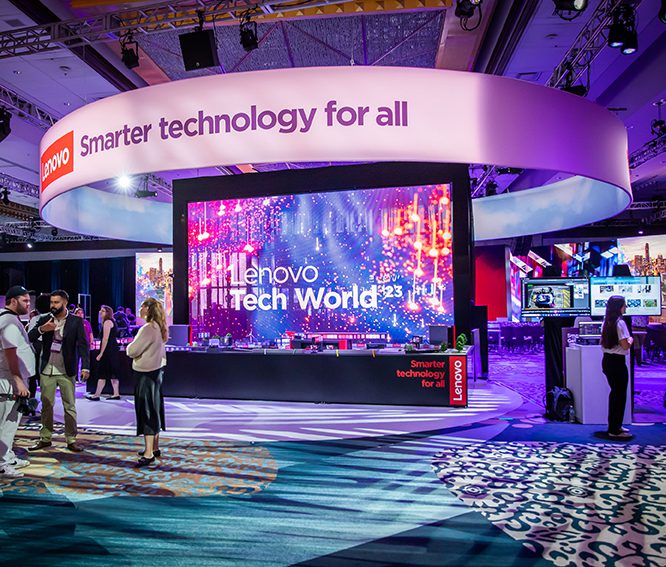
Lenovo event
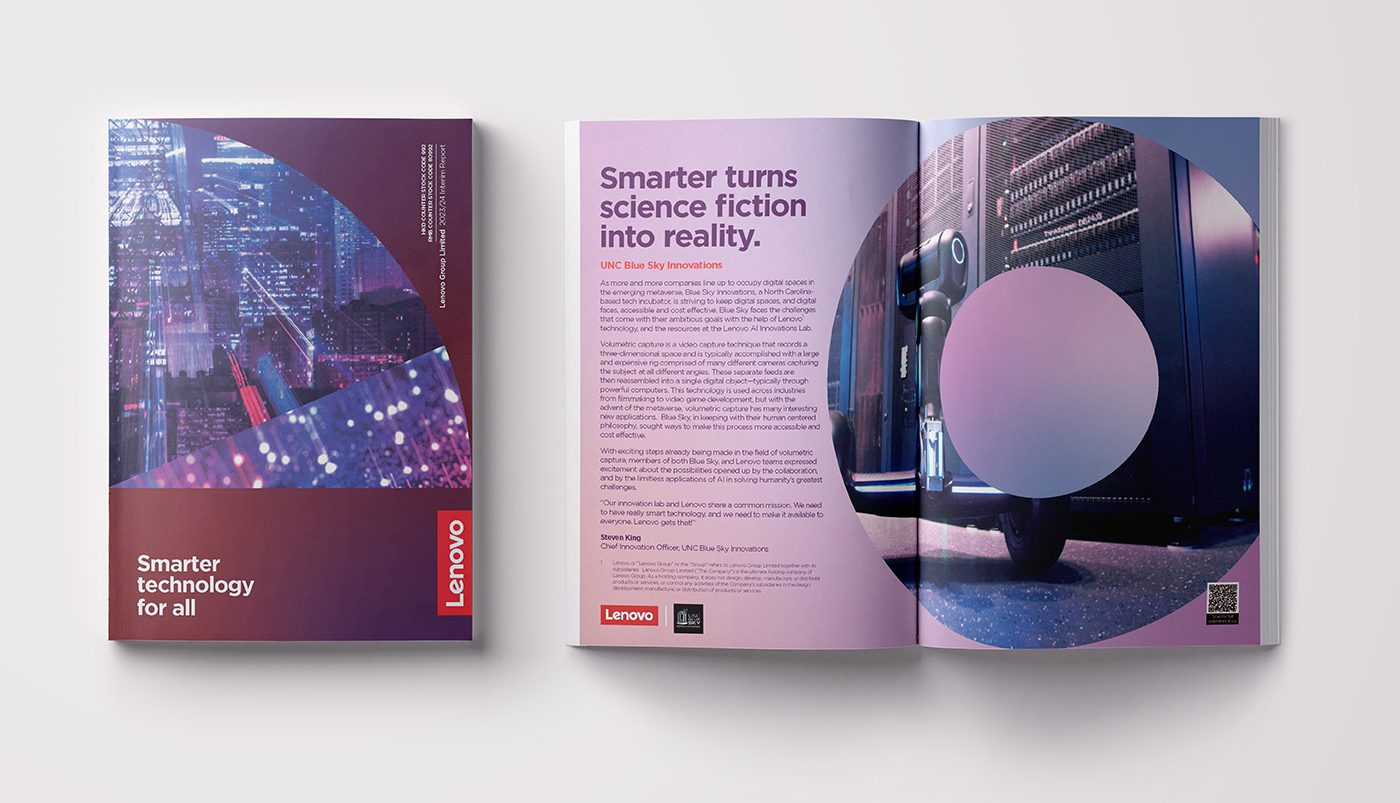
Lenovo investor relations/reports
Product and solution campaigns
Buy-in to the subbrand value proposition: innovation
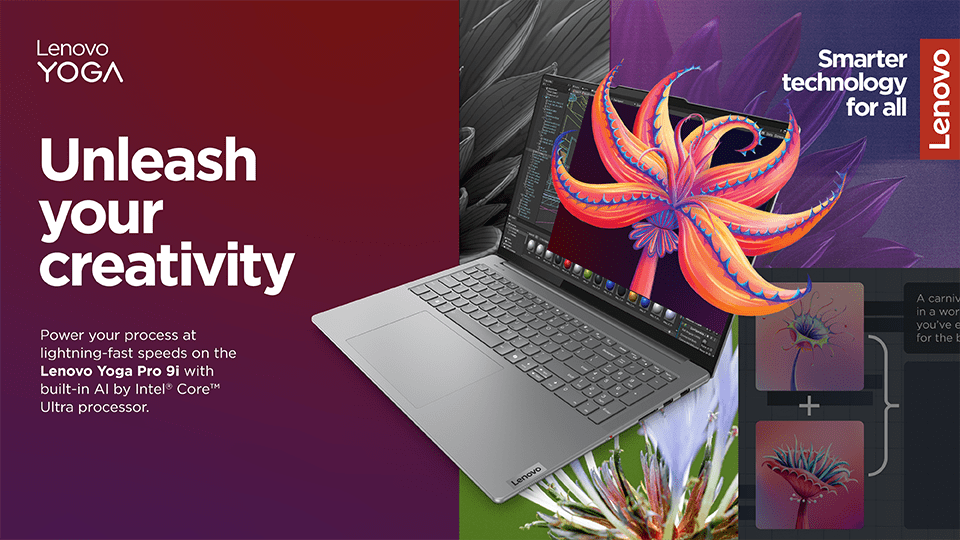
Demand-generation programs
Buy-in to the offering today: specs, pricing, urgency, offers
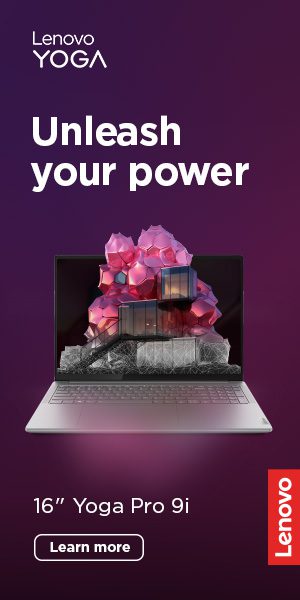
“Smarter” headlines and messaging
How to reinforce our brand positioning
Use the guidance here to write impactful headlines and copy that reinforce our brand positioning and global tagline, “Smarter technology for all,” in marketing and advertising.
Create a stronger brand
Our goal is to create a stronger brand that’s recognizable across product lines, business units, and ad units. Just as correct and consistent usage can elevate our brand, incorrect usage can dilute or diminish it. It’s critical, then, that you follow the guidelines below to help create consistent and compelling work across our organization.
“Smarter technology for all” can be used to communicate corporate and product messages. It is a tagline, not a headline, and isn’t to be used in place of a unique headline.
However, you can and should use the word “smarter” in a headline to communicate the essence of the tagline and reinforce our brand positioning.
Below are appropriate examples of where smarter messages can be used. If you don’t see messaging that works for your purposes, email our Brand Help Desk outlining your need. We’re happy to help you!
Preferred usage and placement
The preferred way to use “smarter” is as a noun as a synonym for Lenovo, placed at the beginning of a sentence. While there is no exact formula, the following frameworks will guide you:
“Smarter” + verb + benefit, offering, or differentiator
Examples
Smarter fights cancer with deadly precision.
Smarter knows an inclusive workforce is an unstoppable force.
Smarter makes the fastest, faster.
Smarter says bye-bye to Wi-Fi.
“Smarter is” + benefit, offering, or differentiator
Examples
Smarter is a revolution.
Smarter is transforming the way we live, work and play.
Smarter is good for business and the planet.
“Smarter technology” vs. “Smarter”
“Smarter” has a boldness and a bigness to it that goes beyond technology to a higher plane of thinking. In a headline, “Smarter technology” seems to only refer to our products. Choose “smarter” whenever possible.
Okay: Smarter technology is turning deadly venom into potential medicine.
Better: Smarter turns deadly venom into potential medicine.
Okay: Smarter technology makes the fastest, faster.
Better: Smarter makes the fastest, faster.
Alternate usage and placement
You may also use “smarter” as an adjective at the beginning or in the middle of a sentence. Again, this framework will help you when using “smarter” at the beginning of a sentence.
“Smarter” + noun + verb + benefit, offering, or differentiator
Examples
Our smarter supply chain ships peace of mind.
Our smarter security goes wherever you do.
Smarter performance helps businesses outperform.
Smarter productivity starts with ThinkPad.
Alternate headline structure 1
When you want the punch to be at the end of the line, use our secondary headline structure, “Now that’s smarter.” Note that this does NOT replace the tagline in a piece. Instead, it serves as the payoff after a primary headline to prove that Lenovo is smarter.
Examples
A built-in web cam cover. Now that’s smarter.
The world’s first foldable PC. Now that’s smarter.
Using AI to detect cancer with deadly precision. Now that’s smarter.
Alternate headline structure 2
Posing provocative questions arouses curiosity and invites the reader to think deeper. The “Are we smarter than that?” structure allows you to do this. Note that this does NOT replace the tagline.
Examples
Do we have to wait years for a cure, or are we smarter than that? (healthcare)
Are we destined to grow old alone, or are we smarter than that? (senior gaming)
Should where we live determine how far we can go, or are we smarter than that? (remote work)
Body copy usage
When talking generally about “smarter technology for all” in the flow of the content, the tagline appears in standard capitalization that reflects its position in the sentence. Most often, this will mean lowercasing it.
Example
We believe in smarter technology for all; that’s why we create great products affordable for everyone.
Copy should be set in Gotham Book sentence case in application
Corporate comms usage
When referring specifically to the tagline or the brand idea, use sentence case and double quotes to set it off.
Example
Lenovo launched its vision of “Smarter technology for all” with a global campaign in September 2019.
Copy should be set in Gotham Book sentence case with single quotes in application
Voiceover usage
“Smarter technology for all” can be used in voiceovers. It will flow with the overall script, just as it would in body copy (see above).
Example
“We believe in smarter technology for all; that’s why we create great products affordable for everyone.”
Hashtag usage
When having conversations around “Smarter technology for all” on social media, use the hashtag #smarter. It can be capitalized in places where you would use a capitalized word, such as at the beginning of the sentence.
Examples
We’re building a #smarter future for all through sustainable, innovative and inclusive tech. Take a closer look at how we’re making a difference with highlights from our ESG Report.
Messaging library
Below are examples of “smarter” messages in different contexts. You’ll bring “Smarter technology for all” to life through the full content.
If you don’t see messaging that works for your purposes, email our Brand Help Desk outlining your need. We’re happy to help you!
Lenovo corporate statements
Brand
- Smarter transforms the way we live, work and play.
- Smarter defies limitations.
- Smarter defies impossible.
- Smarter collects, analyzes, learns and repeats.
- Smarter is a revolution.
- Smarter never stands still.
- Smarter takes on the toughest challenges.
- Smarter challenges convention.
- Smarter makes a world of difference for the world.
- Smarter leads, never follows.
Culture
- Smarter knows inclusion drives innovation.
- Smarter challenges convention.
- Smarter leads, never follows.
- Smarter welcomes every perspective.
- Smarter puts customers first, second and third.
- Smarter fails fast to innovate faster.
- Smarter succeeds when our customers do.
Lenovo Foundation
- Smarter takes compassion to heart.
- Smarter overdelivers for the underserved.
- Smarter makes technology that serves humanity.
- Smarter does good so others can do well.
- Smarter gives and gives and then gives some more.
- Smarter never stops giving.
- Smarter knows giving back moves us all forward.
Lenovo technology examples statements
AI
- Unleashing your creativity with AI, now that’s smarter.
- Smarter AI lets your imagination run wilder.
- Smarter AI turns data into insights in an instant.
- Smarter AI helps employees work from the couch, cubicle or coffee shop.
- Smarter AI gets your remote teams in the same room.
- Smarter AI helps teams work together when they’re not together.
Data
- Smarter uses big data to make a big difference.
- Smarter transforms everything from the front office to the factory floor.
- Smarter cools servers without warming the planet.
Digital Workplace Solutions
- A workplace that works for everyone, now that’s smarter.
- Smarter knows a happy workforce is an unstoppable force.
- Workplaces where employees can go places, now that’s smarter.
- Smarter is making the workplace a better place.
Modern IT
- Smarter is building new solutions for the new workplace.
- Smarter knows how you deploy is as critical as what you deploy.
- Smarter breathes new life into the IT lifecycle.
- Smarter has IT down to a T.
PC
- Smarter puts more power at your fingertips.
- Smarter puts more features at your fingertips.
- Smarter puts the power of a desktop into your laptop.
- Smarter can do what you can dream.
Virtual reality / augmented reality / mixed reality
- Smarter gives reality an upgrade.
- Smarter sparks wonder.
- Smarter unleashes imagination.
- Smarter makes alternate reality a reality.
Lenovo logo lockup
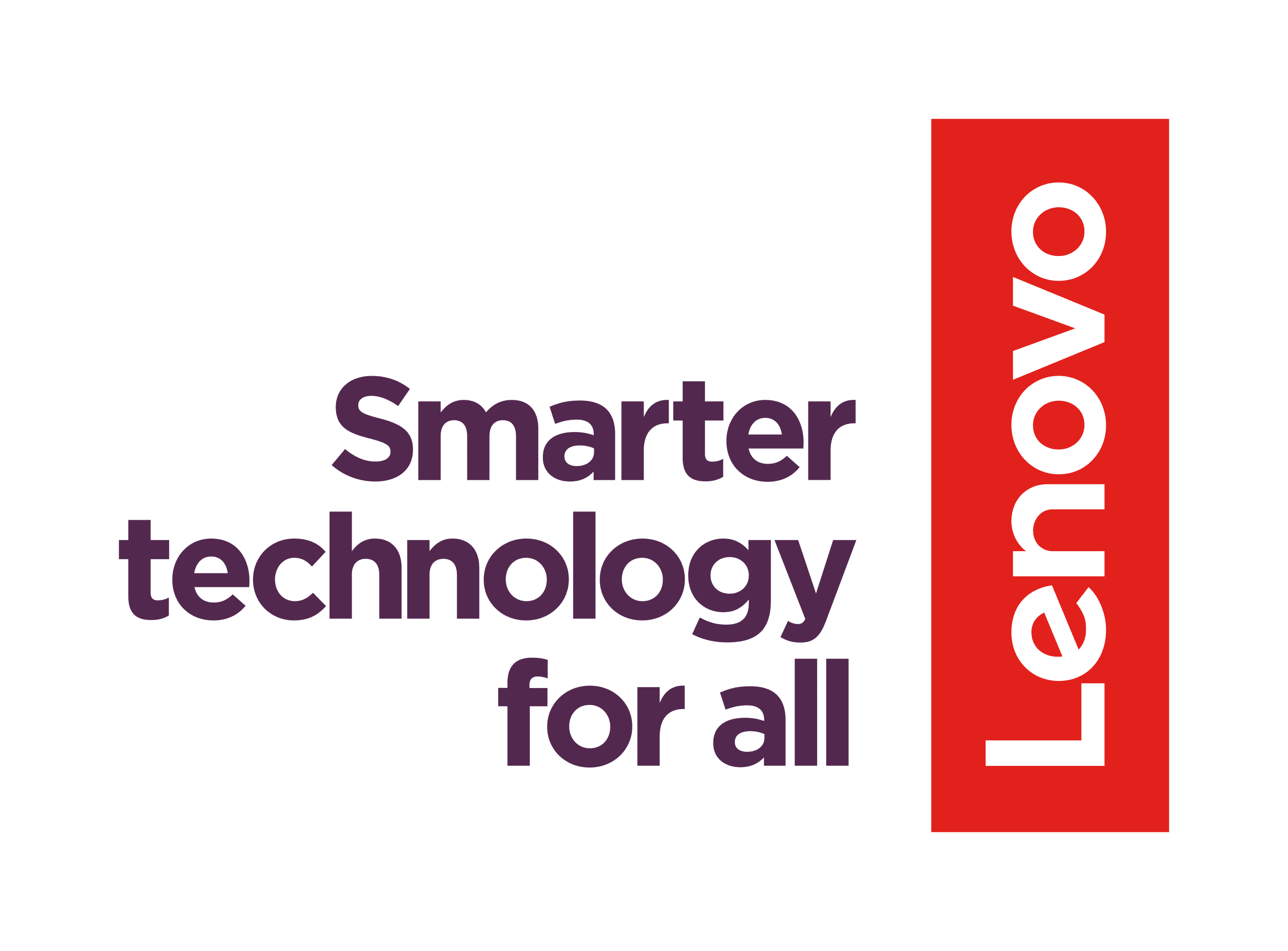
All communications should conclude with our Lenovo logo lockup.
Some exceptions are allowed for smaller-sized assets. For detailed guidance and asset downloads, visit the “Logo lockup” section of this site.
Examples of what not to do
These examples represent the wrong way to apply “smarter technology for all” in headlines and messaging.
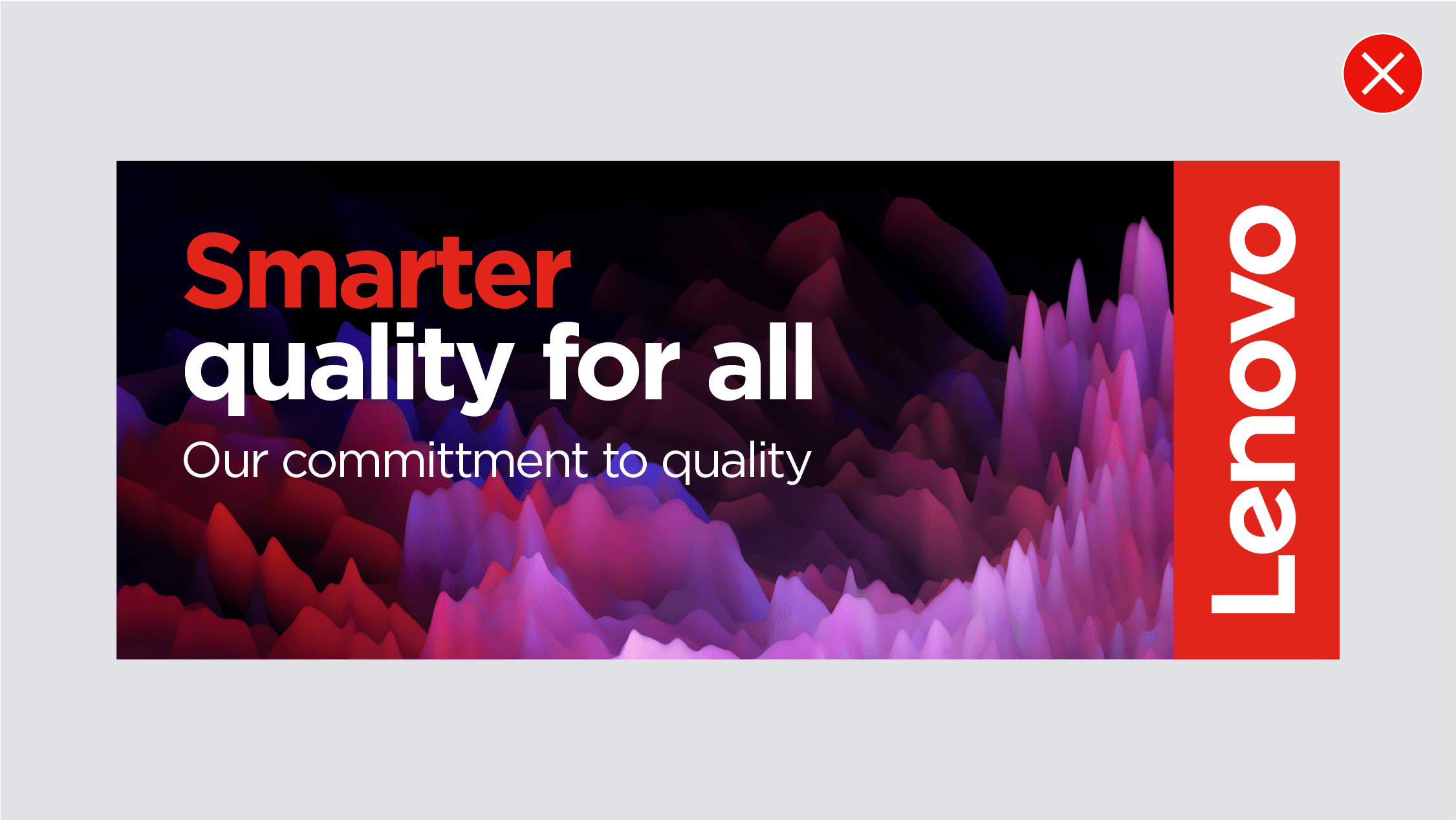
Swapping out the word “technology” for another word in the tagline
“Smarter AI for all” is the only approved exception to the rule and is used in very specific ways for campaigns and events. For questions, reach out to the Brand Help Desk.
“Don’t” example
Smarter quality for all

Losing the power of “smarter” at the end of a sentence
Placing “smarter” at the end of a headline diminishes its boldness and its ownability.
“Don’t examples”
Your smart office just got smarter.
The all-new ThinkPad X1 Carbon is simply smarter.
Lenovo helps your business run smarter.
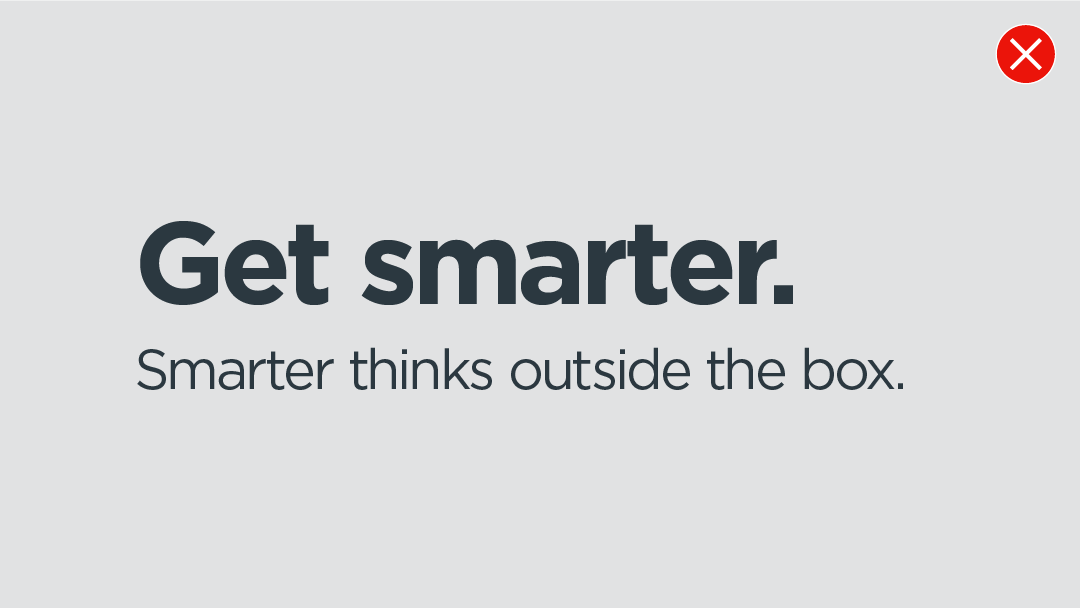
Using clichés
As a brand, we pride ourselves on brave, unexpected thinking. Therefore, we avoid language that is overused and betrays a lack of original thought.
“Don’t” examples
Get smarter.
There’s a smarter way forward.
Smarter is raising the bar.
Smarter thinks outside the box.

Condensing “smarter” to “smart”
The exception is when “smart” is part of a specific service offering, industry term, or product, like our Smart Clock.
“Don’t” example
Smart collaboration
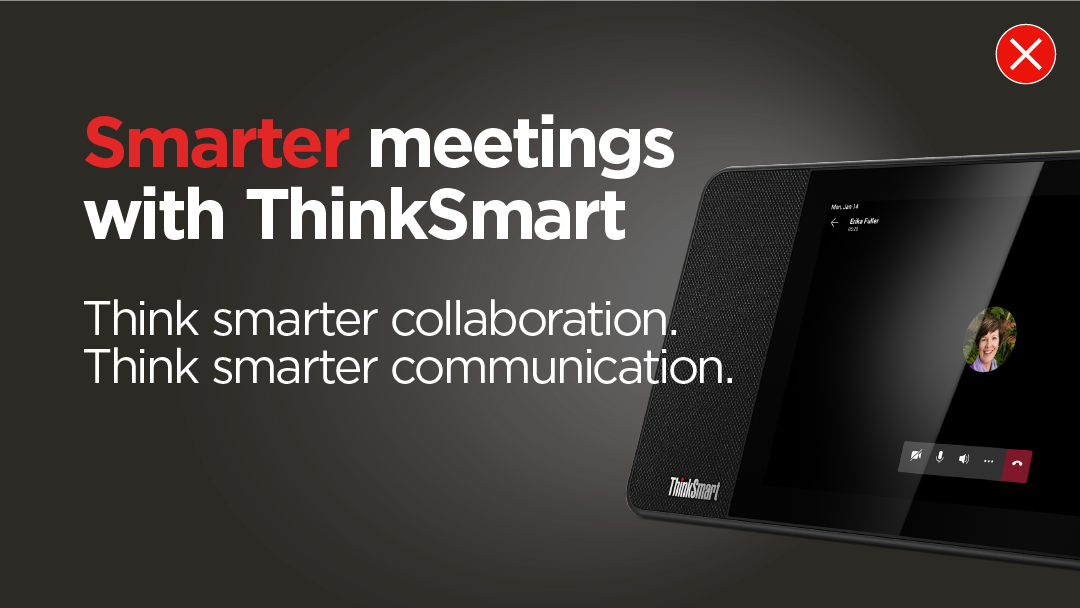
Overusing the word “smarter” in headlines and copy
Applied correctly and judiciously, “smarter” helps strengthen our brand. Overusing it lessens its strength. Especially avoid using the word “smarter” multiple times in a single sentence.
“Don’t” examples
Your smart office just got smarter.
Smarter meetings start with ThinkSmart.
Smarter security is a smarter way to protect your assets.
